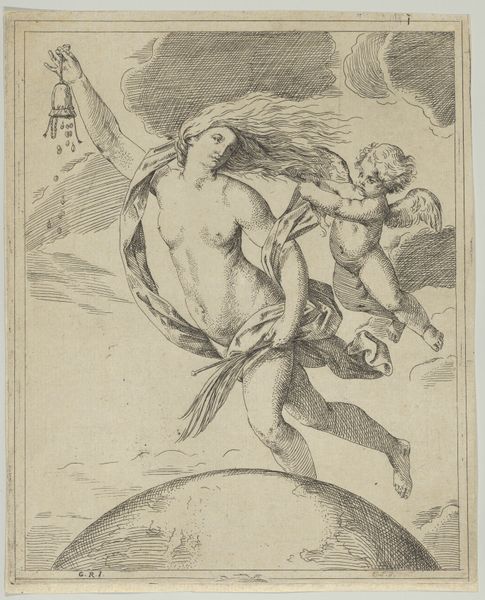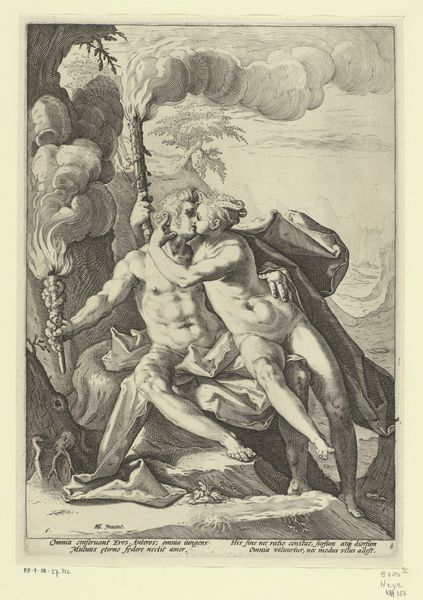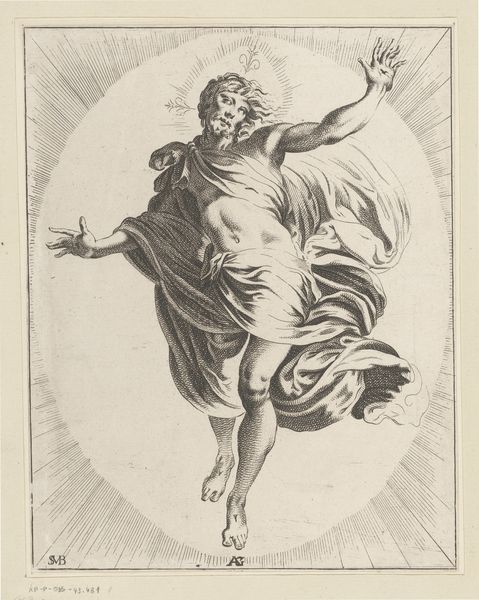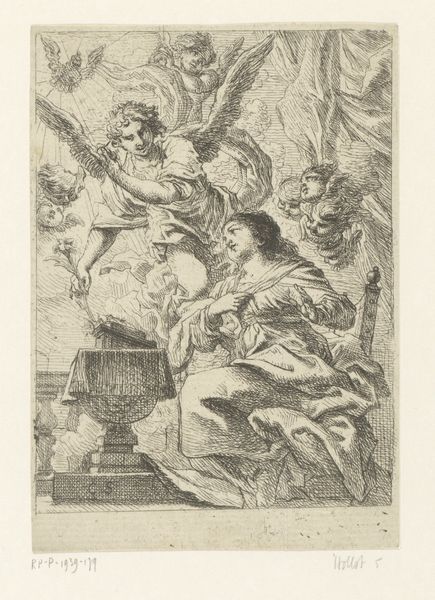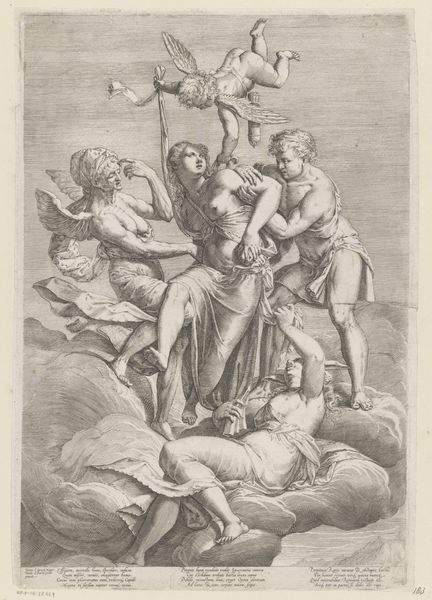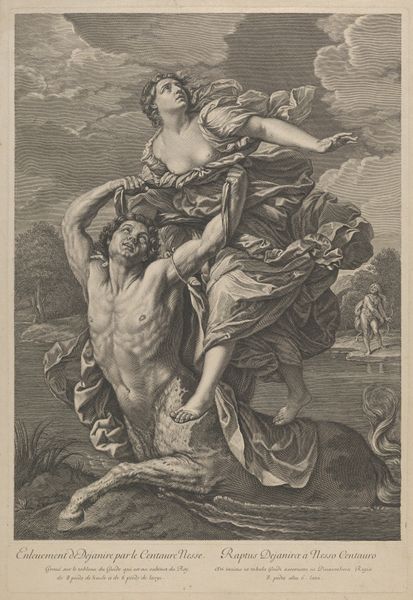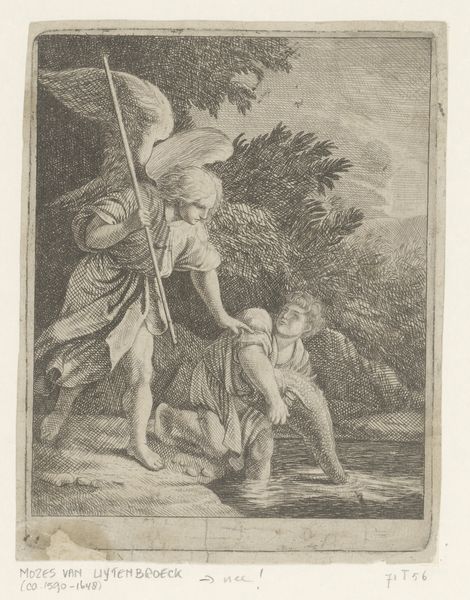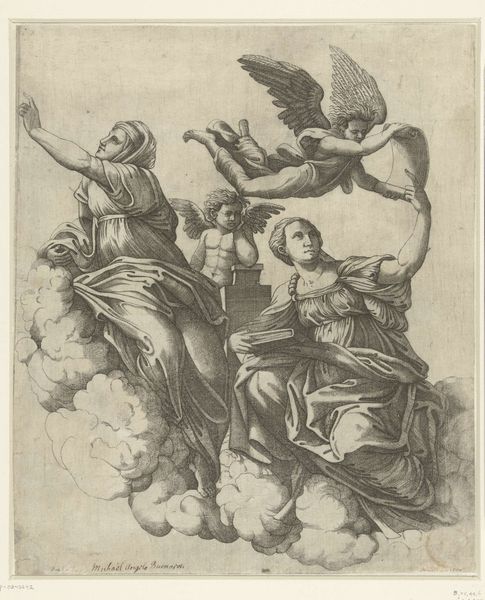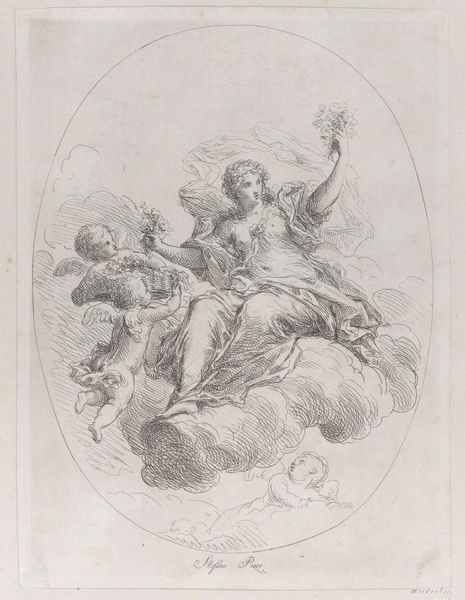
Groupe de deux angelots (regardant vers la droite) 1605 - 1650
0:00
0:00
drawing, print, engraving
#
drawing
#
allegory
#
baroque
# print
#
figuration
#
engraving
Dimensions: sheet: 9 13/16 x 8 1/16 in. (25 x 20.4 cm) image: 9 1/16 x 6 7/8 in. (23 x 17.5 cm)
Copyright: Public Domain
Editor: This is Jean Morin's "Groupe de deux angelots (regardant vers la droite)," made sometime between 1605 and 1650. It's an engraving – a print – of two cherubic figures. The shading is quite lovely. It gives the figures almost palpable form, despite the minimalist composition. How do you interpret this work? Curator: Ah, yes, Morin’s cherubs! To me, they're Baroque exuberance distilled into monochrome. The one on the right clutches a laurel wreath like he's just won some celestial Olympics. You can almost feel the weight of it in his chubby fist! And do you see how the folds in the sash seem to mimic their movements? Editor: Yes! And one has a quill. They feel very active, even celebratory. Why cherubs, though? Was this a popular subject? Curator: Oh, absolutely. These figures, especially in the Baroque period, aren’t just cute babies. They’re allegorical figures, conveying divine love or inspiration. Look how they gaze upwards, their eyes almost sparkling with holy light. This wasn't merely decorative; it was intended to elevate the viewer's thoughts. But tell me, does this image conjure other images for you? Something less pious perhaps? Editor: Now that you mention it, they DO have that look like, you know, when you get caught doing something mischievous… like eating too much cake. Curator: (laughing) Exactly! Divine or gluttonous, there’s an inherent sweetness about them. Morin captured a certain joyful mischief that transcends the ages. What I love most is how accessible he makes the divine through these plump, cheeky beings. Editor: It's amazing how much personality he conveyed with just lines, isn't it? I will definitely look at Baroque art with a new perspective now. Curator: Indeed. Next time you see a chubby angel, remember, it might be thinking about cake, or poetry…or maybe both!
Comments
No comments
Be the first to comment and join the conversation on the ultimate creative platform.
